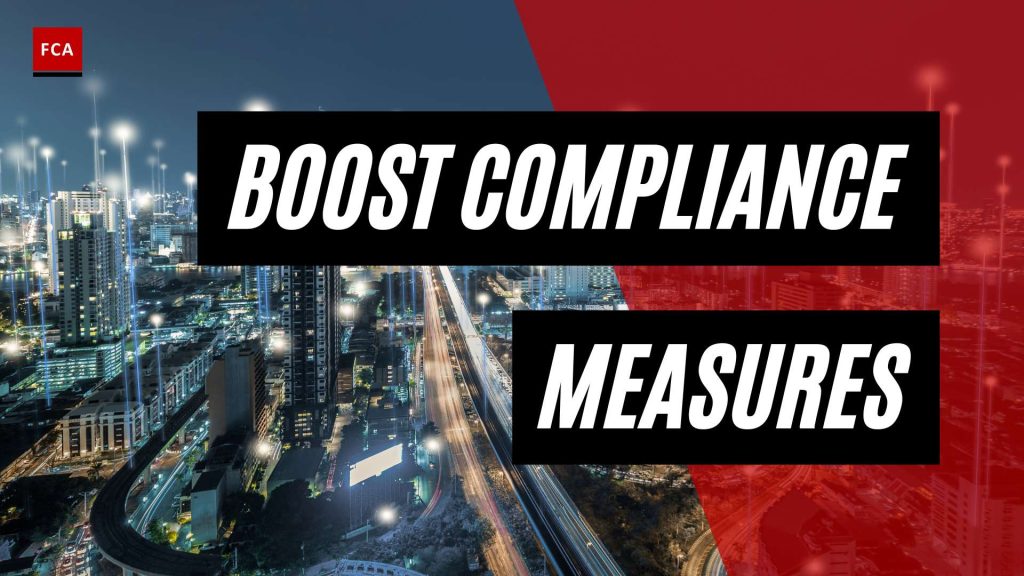Understanding AML Compliance Software
Para combatir eficazmente el lavado de dinero y cumplir con las regulaciones contra el lavado de dinero (AML), las empresas están recurriendo al software de cumplimiento AML. Esta sección explorará qué es el software de cumplimiento AML y destacará su importancia.
What is AML Compliance Software?
El software de cumplimiento AML es una solución de software especializada diseñada para automatizar y agilizar el proceso de cumplimiento AML. Proporciona funciones sólidas para rastrear, monitorear y analizar transacciones financieras, lo que ayuda a las empresas a detectar y prevenir actividades de lavado de dinero de manera efectiva (Dow Jones).
Al aprovechar tecnologías avanzadas como la inteligencia artificial y el aprendizaje automático, el software de cumplimiento AML realiza un monitoreo en tiempo real de las transacciones de los clientes. Identifica actividades sospechosas, genera alertas y proporciona herramientas para informes y registros de auditoría, lo que garantiza la transparencia en los esfuerzos de cumplimiento (Dow Jones).
Importance of AML Compliance Software
The importance of AML compliance software cannot be overstated. Es una herramienta fundamental para que las instituciones financieras y otras entidades reguladas cumplan con sus obligaciones legales y reglamentarias. Estas son algunas de las razones clave por las que el software de cumplimiento AML es esencial:
-
Eficiencia y precisión en el cumplimiento: El software de cumplimiento AML agiliza y automatiza el proceso de cumplimiento, lo que reduce la necesidad de esfuerzos manuales. Permite a las empresas monitorear un gran volumen de transacciones de manera efectiva y detectar actividades sospechosas en tiempo real. Esta eficiencia y precisión mejoradas ayudan a las organizaciones a adelantarse a los posibles riesgos de lavado de dinero.
-
Reducción de los riesgos legales y de reputación: El incumplimiento de la normativa AML puede tener graves consecuencias legales y de reputación para las empresas. El software de cumplimiento AML ayuda a mitigar estos riesgos al garantizar que las organizaciones cuenten con sistemas sólidos para detectar y prevenir actividades de lavado de dinero. Al implementar medidas integrales de cumplimiento, las empresas pueden salvaguardar su reputación y evitar sanciones regulatorias.
-
Incorporación y recorrido del cliente optimizados: El software de cumplimiento AML ofrece funciones como la diligencia debida del cliente y la evaluación de riesgos, lo que permite a las empresas incorporar nuevos clientes de manera efectiva mientras se adhieren a las regulaciones AML. Al agilizar el proceso de incorporación, las organizaciones pueden proporcionar una experiencia de cliente fluida al tiempo que garantizan el cumplimiento de los requisitos normativos.
En resumen, el software de cumplimiento AML desempeña un papel crucial en la mejora de la eficiencia y la eficacia de los programas de cumplimiento AML para empresas de diversos sectores. Al aprovechar las capacidades del software de cumplimiento AML, las organizaciones pueden detectar y prevenir mejor las actividades de lavado de dinero, reducir los riesgos legales y de reputación, y garantizar el cumplimiento de las regulaciones AML.
Características clave del software de cumplimiento AML
Para combatir eficazmente el lavado de dinero y cumplir con los requisitos regulatorios, el software de cumplimiento AML proporciona funciones sólidas que permiten a las empresas rastrear, monitorear y analizar transacciones financieras. By automating compliance processes, this software helps organizations ensure adherence to AML laws and regulations. Let’s explore the key features that make AML compliance software an essential tool for businesses.
Transaction Monitoring and Suspicious Activity Detection
One of the primary functions of AML compliance software is real-time transaction monitoring and the detection of suspicious activities. By analyzing customer transactions, the software identifies patterns and behaviors that may indicate potential money laundering activities. Through the use of advanced algorithms, it generates alerts for further investigation when unusual or suspicious transactions are detected. This proactive approach enables businesses to take timely action and mitigate the risks associated with money laundering.
Customer Due Diligence and Risk Assessment
AML compliance software plays a crucial role in performing customer due diligence (CDD) and risk assessment. It helps businesses gather and verify customer information, including identity, source of funds, and business relationships. By conducting comprehensive risk assessments, the software enables organizations to categorize customers based on their risk profiles. This categorization assists in allocating resources effectively and implementing appropriate mitigation measures for higher-risk customers.
Sanctions Screening and Watchlist Checks
To comply with international sanctions programs and regulatory requirements, AML compliance software includes sanctions screening and watchlist checks. The software compares customer and transaction data against global watchlists, including government-issued sanctions lists and politically exposed persons (PEP) databases. This feature helps businesses identify individuals or entities associated with illegal activities, terrorism, or other sanctioned activities. By flagging matches, the software enables organizations to take necessary actions and report suspicious activities to the relevant authorities.
Regulatory Reporting and Audit Trails
AML compliance software facilitates regulatory reporting and maintains audit trails. It provides tools and templates to generate accurate and timely reports required by regulatory bodies. These reports include details of suspicious transactions, customer information, and steps taken for investigation. By maintaining comprehensive audit trails, the software ensures transparency and accountability in compliance efforts. These audit trails serve as a valuable resource during internal and external audits and investigations.
By utilizing AML compliance software with these key features, businesses can enhance their efficiency and accuracy in compliance efforts. The software enables the identification and prevention of money laundering activities, reducing legal and reputational risks. Additionally, it streamlines the onboarding process and customer journey by automating compliance tasks, allowing organizations to focus on providing quality services while ensuring compliance with AML regulations.
To learn more about specific AML compliance software solutions, check out our articles on ComplyAdvantage, LexisNexis Risk Solutions, Dow Jones Risk and Compliance, LSEG Data and Analytics (formerly Refinitiv), and Oracle AML.
Top AML Compliance Software Solutions
When it comes to selecting the right AML compliance software, several reputable solutions stand out in the market. These software solutions offer advanced features and functionalities to help organizations effectively combat money laundering and financial crimes. Let’s explore some of the top AML compliance software solutions available:
ComplyAdvantage
ComplyAdvantage offers a comprehensive AML solution that utilizes advanced technologies to enhance compliance efforts. Their software reduces false positives by up to 70 percent and shortens onboarding cycle times by up to 50 percent. ComplyAdvantage provides three central capabilities, including graph network detection, identity clustering, and dynamic thresholds. These features enable organizations to detect and mitigate potential risks more efficiently. The software is trusted by numerous banks and financial institutions worldwide (ComplyAdvantage).
LexisNexis Risk Solutions
As a leading global provider of legal, regulatory, and business information and analytics, LexisNexis Risk Solutions offers a comprehensive AML compliance software solution. Their software assists organizations in managing regulatory and reputational risk effectively. With a customer base that includes seven of the world’s top ten banks, LexisNexis Risk Solutions provides robust risk management data and integrated technology solutions to address the evolving challenges of AML compliance (ComplyAdvantage).
Dow Jones Risk and Compliance
Dow Jones Risk and Compliance division specializes in providing risk management data and integrated technology solutions to effectively manage regulatory and reputational risk. Their AML compliance software is trusted by organizations such as Hobson Prior and ICBC. Dow Jones Risk and Compliance offers comprehensive tools and resources to help organizations implement robust AML compliance programs, ensuring adherence to regulatory requirements and reducing financial risks (ComplyAdvantage).
LSEG Data and Analytics (formerly Refinitiv)
LSEG Data and Analytics, formerly known as Refinitiv, is a prominent provider of financial markets infrastructure, financial data, analytics, and news. Their AML compliance software offers organizations comprehensive solutions to manage AML risks effectively. With a customer base that includes Deutsche Bank and JPMorgan Chase, LSEG Data and Analytics provides sophisticated tools and services to help organizations stay compliant and mitigate financial crime risks (ComplyAdvantage).
Oracle AML
Oracle’s AML compliance software features an integrated cloud application and platform service offering. It provides organizations with robust tools and functionalities to detect and prevent money laundering activities. Oracle’s AML software is trusted by institutions such as Credit Agricole and Aman Bank, helping them streamline their AML compliance processes and enhance risk management capabilities (ComplyAdvantage).
These top AML compliance software solutions offer organizations the necessary tools and technologies to strengthen their AML compliance measures. By leveraging the features and capabilities of these software solutions, organizations can enhance their ability to detect and prevent money laundering activities, ultimately safeguarding their reputation and ensuring compliance with regulatory requirements.
Benefits of AML Compliance Software
AML compliance software offers numerous benefits to businesses and financial institutions in their efforts to combat money laundering and ensure regulatory compliance. By leveraging advanced technology and robust features, AML compliance software enhances efficiency, reduces legal and reputational risks, and streamlines the onboarding process for customers.
Enhanced Efficiency and Accuracy in Compliance
One of the primary advantages of using AML compliance software is the significant improvement in efficiency and accuracy when compared to manual compliance processes. The software automates the process of compliance, allowing businesses to track, monitor, and analyze financial transactions in real-time (Dow Jones). This automation eliminates the need for manual data entry and repetitive tasks, saving time and resources.
By utilizing features such as transaction monitoring and suspicious activity detection, AML compliance software can identify potential money laundering activities and generate alerts for further investigation. This proactive approach helps businesses stay ahead of evolving risks and ensures timely intervention to mitigate potential threats.
Reduction of Legal and Reputational Risks
Non-compliance with anti-money laundering regulations can result in severe legal and reputational consequences for businesses. AML compliance software plays a crucial role in reducing these risks by helping financial institutions and other regulated entities maintain compliance with the applicable laws and regulations.
By implementing robust customer due diligence and risk assessment features, AML compliance software enables businesses to identify and verify the identity of their customers, assess their risk profile, and monitor their transactions for suspicious activities. This comprehensive approach helps prevent illicit funds from entering the financial system and safeguards businesses from potential involvement in money laundering schemes.
Compliance software also provides powerful sanctions screening and watchlist checks, allowing businesses to screen their customers against global sanctions lists and identify any potential connections to high-risk individuals or entities. By proactively identifying these risks, businesses can avoid engaging in transactions that may violate sanctions laws and regulations.
Streamlined Onboarding and Customer Journey
The onboarding process for new customers can be time-consuming and complex, especially when it involves compliance procedures. AML compliance software simplifies this process by streamlining the onboarding journey and making it more efficient.
With features like automated data collection, verification, and risk assessment, AML compliance software enables businesses to onboard customers more quickly and seamlessly. This not only enhances the customer experience but also ensures compliance with regulatory requirements.
By leveraging user-friendly interfaces and robust customer service, AML compliance software facilitates smooth communication between businesses and their customers throughout the onboarding process. This helps build trust and confidence while ensuring compliance with AML regulations.
In summary, AML compliance software enhances efficiency and accuracy in compliance efforts, reduces legal and reputational risks, and streamlines the onboarding process for customers. By leveraging these software solutions, businesses can effectively combat money laundering activities, stay compliant with regulatory requirements, and protect their reputation in an ever-changing financial landscape.
Implementación del software de cumplimiento AML
When it comes to implementing AML compliance software, there are several key factors to consider. A successful implementation ensures smooth integration with existing systems, real-time alerts and reporting capabilities, and user-friendly interfaces with excellent customer service. Let’s explore each of these aspects in more detail.
Integration with Existing Systems
One of the critical considerations when implementing AML compliance software is its integration with existing systems. A well-designed solution should seamlessly integrate with your organization’s current infrastructure, such as customer relationship management (CRM) systems, transaction monitoring systems, and fraud detection software (Persona). This integration enables the software to leverage existing data sources and streamline the compliance process.
By integrating with existing systems, AML compliance software can access relevant customer data, transaction records, and other necessary information. This integration ensures a holistic view of customer activity, facilitating more accurate risk assessments and effective detection of suspicious transactions. Furthermore, it enables the software to generate comprehensive reports and audit trails for regulatory compliance purposes.
Real-Time Alerts and Reporting Capabilities
AML compliance software should provide real-time alerts and reporting capabilities to enhance the effectiveness of your compliance efforts. Real-time alerts promptly notify compliance officers of suspicious activities and potential money laundering risks. These alerts enable timely investigation and intervention, minimizing the potential impact of illicit financial activities.
Additionally, robust reporting capabilities are vital for meeting regulatory requirements and demonstrating compliance. AML compliance software should offer customizable reporting features that allow you to generate detailed reports on suspicious transactions, customer due diligence, and regulatory filings. These reports provide a comprehensive overview of your organization’s compliance efforts and serve as evidence of your commitment to combating money laundering.
User-Friendly Interfaces and Customer Service
User-friendly interfaces and excellent customer service are crucial elements of a successful AML compliance software implementation. The software should have an intuitive and easy-to-navigate interface, allowing compliance professionals to efficiently perform their duties. Clear and well-organized dashboards, search functionalities, and data visualization tools contribute to a positive user experience and facilitate effective compliance management.
Furthermore, reliable customer service and technical support are essential for a smooth implementation process. The software provider should offer comprehensive training and ongoing support to ensure that your team can effectively utilize the software’s features. Prompt assistance and timely responses to inquiries or technical issues are crucial for maintaining compliance operations without disruptions.
By focusing on integration, real-time alerts, reporting capabilities, user-friendly interfaces, and customer service, organizations can successfully implement AML compliance software. This implementation helps enhance compliance efficiency, reduce legal and reputational risks, and streamline the onboarding and customer journey. With the evolving regulatory landscape in the financial industry, leveraging robust AML compliance software is key to staying ahead and protecting your organization against money laundering threats.
AML Compliance Software and Regulatory Requirements
To effectively combat money laundering and ensure compliance with anti-money laundering (AML) regulations, it is essential to understand the relevant regulatory requirements. AML compliance software plays a vital role in helping organizations meet these obligations. Let’s explore some of the key regulatory requirements that AML compliance software addresses.
Financial Action Task Force (FATF) Guidelines
The Financial Action Task Force (FATF) was established in 1989 as a global regulatory body to combat money laundering and terrorist financing. Comprising 39 member countries worldwide, the FATF sets international standards for AML compliance programs. These standards provide guidance on risk assessment, customer due diligence, transaction monitoring, and other crucial aspects of AML compliance.
AML compliance software solutions are designed to assist organizations in implementing and adhering to the FATF guidelines. By automating processes such as customer due diligence, transaction monitoring, and regulatory reporting, these software solutions help organizations stay in line with FATF recommendations and mitigate the risk of non-compliance.
The 6th Anti-Money Laundering Directive (6AMLD)
The European Union’s 6th Anti-Money Laundering Directive (6AMLD) was adopted in October 2018 and became effective on December 3, 2020. This directive introduces significant updates and enhancements to previous AML directives. It aims to strengthen the EU’s AML framework by imposing stricter penalties, expanding the definition of money laundering, establishing mandatory central registers, improving cooperation among member states, and identifying 22 predicate offenses related to money laundering.
AML compliance software solutions assist organizations in complying with the requirements of the 6AMLD. These solutions provide advanced transaction monitoring capabilities, enhanced customer due diligence processes, and robust reporting functionalities to ensure organizations meet the directive’s obligations.
The Bank Secrecy Act (BSA)
In the United States, the Bank Secrecy Act (BSA) is a critical anti-financial crime law overseen by the Financial Crimes Enforcement Network (FinCEN). The BSA requires financial institutions to maintain comprehensive records of their clients’ identities and transactions to detect and prevent money laundering.
AML compliance software plays a crucial role in helping financial institutions meet the requirements of the BSA. These software solutions provide robust transaction monitoring capabilities, customer due diligence tools, and regulatory reporting functionalities to ensure compliance with the BSA. By automating these processes, organizations can efficiently identify suspicious activity, report it to the appropriate authorities, and mitigate the risk of non-compliance.
By utilizing AML compliance software solutions, organizations can effectively address the regulatory requirements set by the FATF, the 6AMLD, the BSA, and other relevant regulatory bodies. These software solutions streamline compliance processes, enhance risk assessment capabilities, and provide comprehensive audit trails, enabling organizations to maintain a strong AML compliance program and protect themselves against financial crimes.
Industry-Specific Risk Factors for Money Laundering
In the fight against money laundering and terrorist financing, it is crucial to identify and address specific risk factors within different industries. Certain industries are more susceptible to these illicit activities, requiring heightened vigilance and the use of effective AML compliance software solutions. Let’s explore some industry-specific risk factors associated with money laundering:
Instituciones financieras
Financial institutions, including banks, currency exchange houses, check cashing facilities, and payment processing companies, are considered high-risk industries for money laundering and terrorist financing. These institutions handle significant volumes of financial transactions, making them attractive targets for illicit activities. Implementing robust AML compliance software becomes essential for these institutions to detect and prevent suspicious transactions, ensuring compliance with regulatory requirements. For more information about compliance software solutions for banks, refer to our article on compliance software for banks.
High-Volume Electronic Payments
Industries that involve large volumes of electronic payments, such as ACH transfers, wire transfers, remittances, and prepaid cards, are particularly indicative of illegal activities. These high-volume transactions can be used to facilitate money laundering and terrorist financing. AML compliance software plays a crucial role in monitoring and analyzing these electronic payments, helping businesses identify suspicious patterns and transactions. To learn more about transaction monitoring software, refer to our article on transaction monitoring software.
Remote and Faceless Transactions
Businesses that provide services to clients virtually, without face-to-face interactions, carry a higher risk of being used for money laundering and terrorist financing. Examples include remote banking and payment services, currency exchanges, and real estate transactions where the buyer is absent. These remote and faceless transactions make it easier for illicit funds to be transferred and concealed. AML compliance software can assist in identifying and verifying customer information, conducting risk assessments, and detecting suspicious activities in these types of transactions.
To effectively combat money laundering and terrorist financing, it is crucial for businesses operating in these high-risk industries to utilize robust AML compliance software solutions. These software solutions help identify and mitigate the specific risk factors associated with each industry, ensuring compliance with regulatory requirements and protecting against the financial and reputational risks of money laundering. For a comprehensive overview of AML compliance software solutions, refer to our article on compliance software solutions.
Remember, the Financial Action Task Force (FATF) mandates the establishment of strong AML compliance systems, making AML software solutions an essential component for businesses to comply with regulations and avoid penalties (KYC Hub). By leveraging the power of AML compliance software, businesses can enhance their anti-money laundering efforts and contribute to a safer and more secure financial system.
The Future of AML Compliance Software
As technology continues to advance, the future of AML compliance software holds great potential for further improving anti-money laundering efforts. There are several key areas that are driving the evolution of AML compliance software, including advancements in artificial intelligence and machine learning, the introduction of new regulations, and the integration of specialized tools like Sanction Scanner.
Advancements in Artificial Intelligence and Machine Learning
AML compliance software is leveraging advancements in artificial intelligence (AI) and machine learning (ML) to enhance its capabilities. By using these technologies, AML software can efficiently scan enormous amounts of data, identify patterns, and detect suspicious transactions more accurately and efficiently than ever before. This helps financial institutions, insurance companies, e-commerce platforms, and other industries combat money laundering activities effectively (Ixsight).
AI and ML algorithms are capable of learning from vast datasets, enabling the software to adapt and improve its fraud detection capabilities over time. These technologies can analyze customer behavior, identify anomalies, and generate real-time alerts for further investigation. By continuously learning and evolving, AML compliance software can stay ahead of ever-changing money laundering tactics.
7th Anti-Money Laundering Directive (7AMLD)
The introduction of the 7th Anti-Money Laundering Directive (7AMLD) by the European Union is set to have a significant impact on AML compliance software. The directive aims to strengthen the fight against money laundering and terrorist financing by expanding the scope of criminal liability and imposing stricter penalties. AML compliance software will need to adapt to meet the new regulatory requirements and ensure compliance with the directive.
7AMLD emphasizes the need for enhanced due diligence, risk assessment, and transaction monitoring. AML compliance software will play a crucial role in helping organizations comply with these requirements by providing robust tools for customer due diligence, risk assessment, and regulatory reporting.
Sanction Scanner and AML Compliance
Sanction Scanner is an example of a specialized tool that is emerging in the AML compliance software landscape. It offers comprehensive screening capabilities to ensure compliance with global sanction and warning lists, politically exposed person (PEP) lists, and negative news checks. By automating these checks, AML compliance software can significantly reduce manual effort and enhance compliance efficiency (Persona).
Sanction Scanner and similar tools enable organizations to streamline their identity operations, automate media checks, and handle compliance more effectively. These specialized capabilities contribute to the overall strength and effectiveness of AML compliance software in identifying and preventing fraudulent activities.
As the landscape of anti-money laundering compliance continues to evolve, AML compliance software will play a crucial role in helping organizations stay compliant with regulations, detect suspicious activities, and mitigate financial risks. By embracing advancements in AI and ML, adapting to new regulations like 7AMLD, and incorporating specialized tools like Sanction Scanner, AML compliance software will continue to strengthen its capabilities and contribute to the global fight against money laundering.








